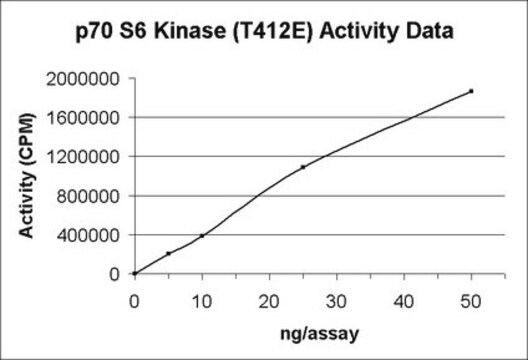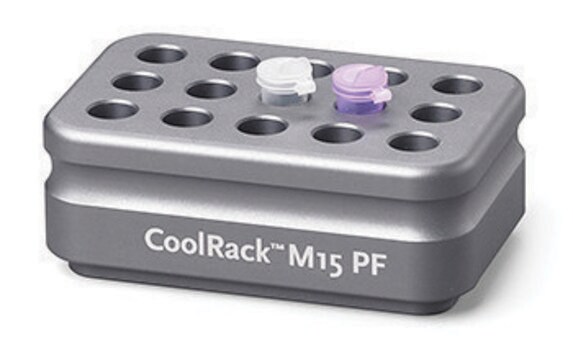14-327-M
JNK1α1/SAPK1c Protein, active, 10 µg
Active, recombinant full-length human JNK1α1/SAPK1c with an N-terminal His-tag, for use in Kinase Assays.
About This Item
Productos recomendados
biological source
human
Quality Level
recombinant
expressed in Sf21 cells
product line
Upstate®
specific activity
(For Specific Activity data, refer to the Certificate of Analysis for individual lots of this enzyme.)
mol wt
Mw 45 kDa
purified by
(Ni2+/NTA-agarose)
species reactivity
human
manufacturer/tradename
Upstate®
technique(s)
activity assay: suitable (kinase)
accession no.
(FUNCTION: SwissProt: P45983 # JNK1 isoforms display different binding patterns: beta-1 preferentially binds to c-Jun, whereas alpha-1, alpha-2, and beta- 2 have a similar low level of binding to both c-Jun or ATF2. However, there is no correlation between binding and phosphorylation, which is achieved at about the same efficiency by all isoforms. )
NM_002750.2
NCBI accession no.
UniProt accession no.
Gene Information
human ... MAPK8(5599)
General description
Packaging
Also available in 250μg size (catalog number 14-327M).
Quality
Target description
Other Notes
Legal Information
Disclaimer
signalword
Warning
hcodes
Hazard Classifications
Skin Sens. 1
Storage Class
10 - Combustible liquids
wgk_germany
WGK 1
flash_point_c
Not applicable
Certificados de análisis (COA)
Busque Certificados de análisis (COA) introduciendo el número de lote del producto. Los números de lote se encuentran en la etiqueta del producto después de las palabras «Lot» o «Batch»
¿Ya tiene este producto?
Encuentre la documentación para los productos que ha comprado recientemente en la Biblioteca de documentos.
Nuestro equipo de científicos tiene experiencia en todas las áreas de investigación: Ciencias de la vida, Ciencia de los materiales, Síntesis química, Cromatografía, Analítica y muchas otras.
Póngase en contacto con el Servicio técnico









